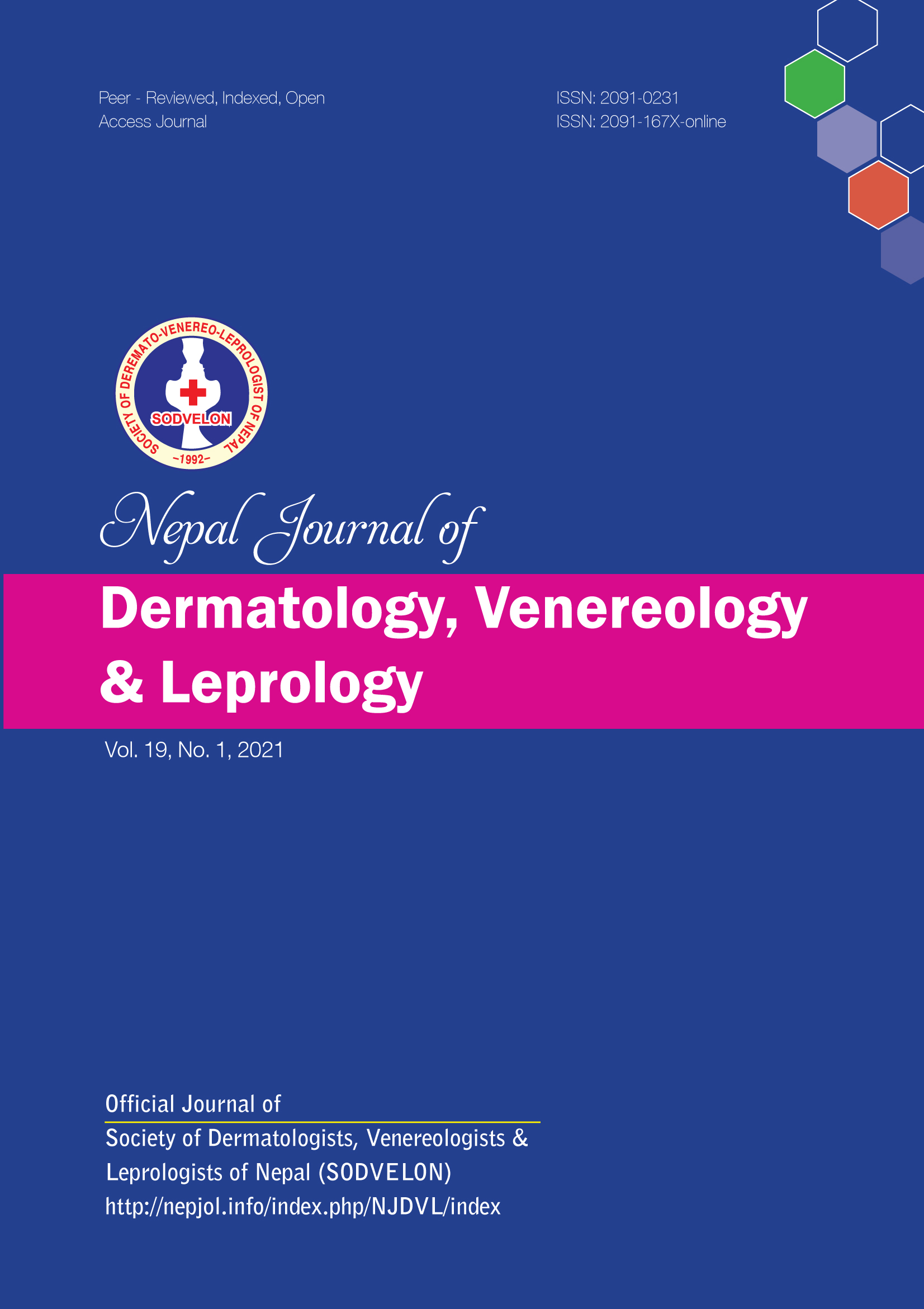Clinico-mycological Study of Dermatophytosis and Their Antifungal Susceptibility, A Hospital Based Study
DOI:
https://doi.org/10.3126/njdvl.v19i1.34693Keywords:
Dermatophyte, Dermatophytosis, Tinea, Trichophyton, Antifungal susceptibilityAbstract
Background: Dermatophytosis refers to superficial fungal infections of keratinized tissues caused by keratinophilic dermatophytes. It is the most common of the superficial fungal infections. Nowadays, these fungal infections are at a rise and run a prolonged course despite of treatment due to resistance to conventional antifungal agents. There is a felt need to conduct an epidemiological studies to know the change in the pattern and causes of widespread resistance.
Objectives: This study was aimed at identifying clinico-mycological patterns of dermatophytic infections in patients attending the dermatology outpatient department of a tertiary care hospital in Birgunj and the adjoining areas.
Methods: The study included cases of clinically diagnosed dermatophytosis from the outpatient department of Dermatology of National Medical College, Birgunj. Clinical and epidemiological data were collected as per proforma and skin scraping, hair plucking, and nail clipping were done and materials were examined microscopically by KOH mount then cultured on Sabouraud dextrose agar and antifungal susceptibility were done by disk diffusion test.
Results: here were 349 patients recruited in the study, with a male: female ratio of 1.6:1. The most commonly affected age group was 20–29 years (27.3%). Tinea corporis was the most common type observed (38.1%). Potassium hydroxide positivity was seen in 228 samples (65.3%) and culture positivity was found in 202 samples (57.9%). The most common species identified was Trichophyton rubrum (55%). The most sensitive drug was itraconazole, and more number of resistances was noted with fluconazole.
Conclusion: Dermatophytic infection is ecumenical in distribution with increased frequency in tropical and subtropical countries with variable epidemiology. Inadequate and irregular use of antifungal drugs has led to the emergence of resistant strains, which cause poor treatment outcomes. Thus, it is essential to test for antifungal sensitivity to check for resistance to antifungals.
Downloads
Downloads
Published
How to Cite
Issue
Section
License
Copyright on any research article is transferred in full to Nepal Journal of Dermatology, Venereology & Leprology upon publication. The copyright transfer includes the right to reproduce and distribute the article in any form of reproduction (printing, electronic media or any other form).




